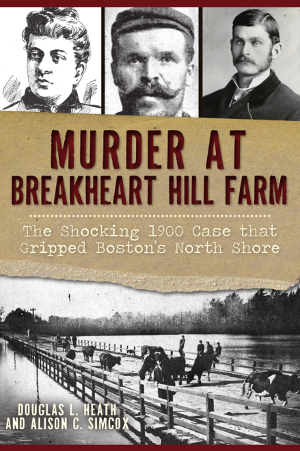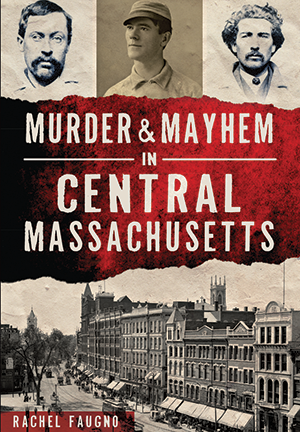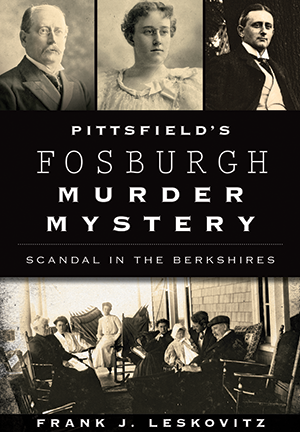
Is there any act more macabre than dismemberment? To take the knife or axe to the body you’ve just slain; to hold the limbs, still warm to the touch, in your bloodied hands; to raise your arm before lowering it and then—
No, we’re pretty sure there’s nothing worse. Seriously. We checked.
As we’ve seen, criminals will do just about anything to hide evidence of their crimes, including burying the corpse of their lover in their own backyard. But when criminals take things to the next level, desperate times calling for desperate measures and all—if you remember the unfortunate case of Sam McMillan of Sanford, Florida, then you’ll remember the rather grisly discovery that investigators searching for his remains found in October 1882.
Too bad John C. Best of Breakheart Hill Farm, Massachussetts, wasn’t a Crime Capsule reader, because he might have disposed of his own victim’s body more successfully.
We’ll spare you the backstory, riveting though it is—a dark and murky stew of violence, whiskey, licentiousness, adultery, whiskey, repression, abuse, enforced flights by horse-and-carriage, unruly mobs, and oh, did we mention the whiskey? The pages of Douglas L. Heath and Alison C. Simcox’s Murder at Breakheart Hill Farm: The Shocking 1900 Case that Gripped Boston’s North Shore are positively soaked with the stuff. Between that and the homemade apple cider they all drank instead of water, it’s a wonder these late Victorian farmers didn’t die of cirrhosis first before murdering each other.

But no, for John C. Best, volatile, drunken farmhand at Breakheart Farm, murder was the way to go. Driven to the deed by his employer—George Bailey, an equally drunken, temperamental steward, who withheld others’ wages as often as he extended the fist to his mistress—Best decided after months of enduring his Bailey’s abuse (and fancying that mistress himself) that there was only one way to solve the problem.
But Best didn’t realize that he was trading one problem for another. After the fateful night in October 1900 where he shot Bailey twice, then hacked off his head and limbs with a blunt axe, wrapped the pieces in burlap sacks, weighted them down with stones from the farmhouse wall, tied them off with rope from the barn, and dropped the pieces into the nearby Floating Bridge Pond, he forgot one key detail that would seal his guilt and send him not to the gallows but instead to old Sparky.
He didn’t use large enough stones.

As Heath and Simcox point out, once Best had been charged with murder, the evidence against him at trial hinged on key artifacts that came to light, one at a time. Bailey’s stolen pocket-watch, stowed away in a rafter of the barn with wads of cash. The overcoat Bailey was wearing that night, and the set of keys, still in the house, that (according to said mistress) never left his side. But undoubtedly the most significant of all was Bailey’s own corpse, which, propelled by gases produced in decomposition, had risen to the surface of the pond, where it was discovered about ten days after the deed.
Well, part of it anyway. Had Best used heavier stones, it’s possible that Bailey’s torso, which came up first, would never have floated upwards in its burlap sack. Its discovery prompted investigators to trawl the entire rest of the pond—using a DIY contraption that Heath and Simcox write was fangled out of pipe, wire, rope, and about a dozen cod hooks —leading to the discovery of yet more limbs (along with a bicycle and a wagon wheel or two), and, yes, Bailey’s severed head.
With that, Best’s defense that Bailey must have disappeared back to Maine to rejoin his estranged wife, hiding out somewhere to avoid charges of abandonment, fell apart. And with that went any hope of naming a scapegoat, for no one else in the area possessed the three classic M’s of murder: means, motive, and… m-opportunity?
Work with us here.

It didn’t take long for the verdict to arrive—murder in the first, the jury having deliberated only on whether it was murder-one or murder-two. Best took the news standing up, and even until the day he sat down in The Chair, maintained his innocence—but according to Heath and Simcox, no one at the time seems to have bought the act. The evidence was simply too strong—Lord almighty, did we forget to mention the mysterious bloodstains on the floorboards of the farmhouse? Whoops.
At the very least, we can be grateful for one thing. That unlike poor Sam McMillan—may heaven rest his soul—at least the police didn’t bring Bailey’s severed head to trial.
Decency, folks. Decency.
Looking for more to read during quarantine? Check out our quaran-reads here. Finding us for the first time, and want to learn more about what we do? Visit our welcome page and sign up for the Crime Capsule email newsletter. See you behind bars!






